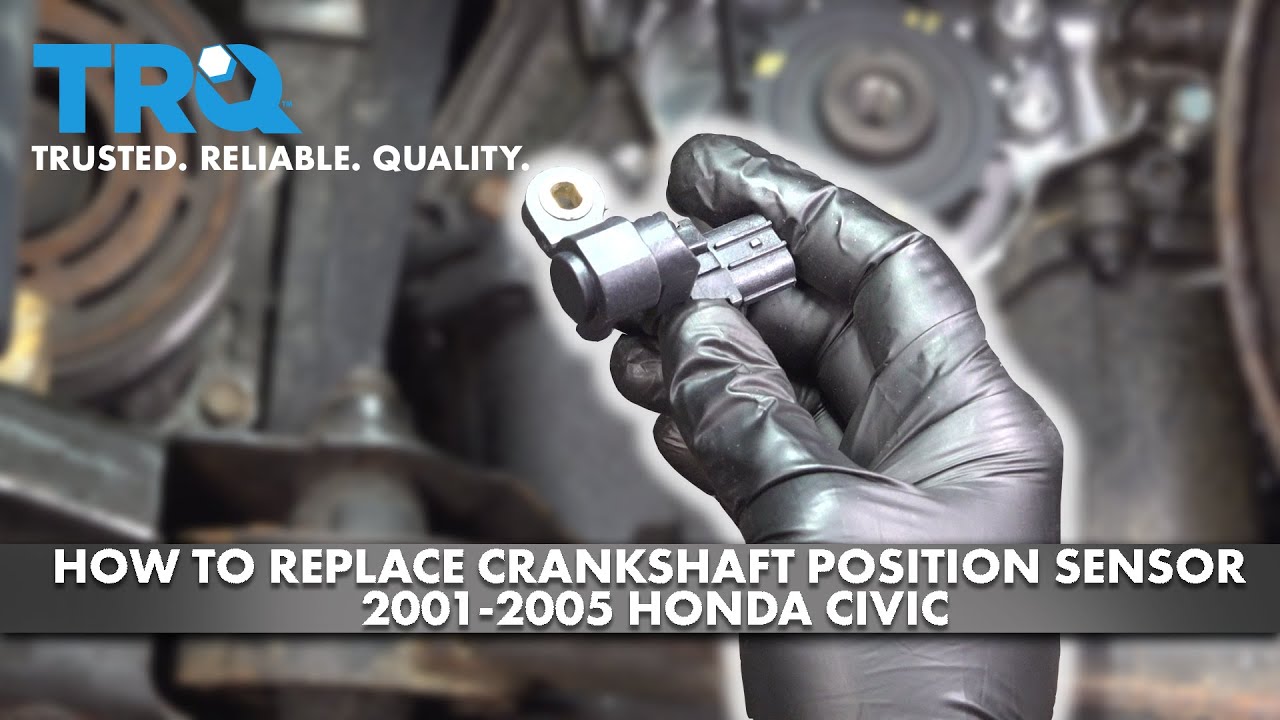05 Honda Civic Crankshaft Position Sensor

The 2005 Honda Civic: a paragon of reliability, fuel efficiency, and surprisingly, a platform for some seriously passionate debate. But even the most dependable machines aren't immune to the occasional gremlin. Today, we're diving deep into one of those potential gremlins: the crankshaft position sensor (CKP sensor). This tiny component plays a *crucial* role in your Civic's engine management, and understanding its function and potential issues can save you a headache (and a hefty repair bill) down the road.
What Does a Crankshaft Position Sensor Do?
Simply put, the CKP sensor tells the engine control unit (ECU) where the crankshaft is positioned. This information is vital for timing ignition and fuel injection correctly. Without a functioning CKP sensor, your Civic will likely refuse to start, or run very poorly, if at all. Think of it as the maestro of your engine's combustion symphony.
Variations in the 2005 Civic CKP Sensor
While the fundamental function remains the same, there are some subtle differences depending on your 2005 Civic's engine. The primary distinction lies between the standard D17 series engines (D17A1, D17A2, D17A6, D17A7) and the sporty K20A3 found in the Civic Si.
Spec Table: CKP Sensor Differences
| Engine | Sensor Type | Honda Part Number (Typical) | Connector Type |
|---|---|---|---|
| D17A1, D17A2, D17A6, D17A7 (Non-Si) | Hall Effect | 37500-PLC-015 | 3-Pin Connector |
| K20A3 (Civic Si) | Hall Effect | 37500-PRB-A01 | 3-Pin Connector (Different Pinout Considerations) |
Important Note: While both engines use a Hall effect sensor with a 3-pin connector, the pinout and internal resistance values can differ slightly. Always double-check the part number against your specific engine code to ensure compatibility. Using the wrong sensor could lead to misfires, poor performance, or even damage to the ECU.
Troubleshooting a Faulty CKP Sensor
Diagnosing a bad CKP sensor typically involves checking for specific diagnostic trouble codes (DTCs) using an OBD-II scanner. Common codes include P0335 (Crankshaft Position Sensor 'A' Circuit Malfunction) and P0336 (Crankshaft Position Sensor 'A' Circuit Range/Performance). However, these codes don't always point directly to the sensor itself. Wiring issues, a damaged crankshaft position reluctor wheel (the toothed wheel the sensor reads), or even a weak battery can cause similar symptoms.
Symptoms of a Failing CKP Sensor:
- No start condition: The engine cranks but doesn't fire.
- Stalling: The engine cuts out unexpectedly, especially when hot.
- Rough idling: The engine runs erratically at idle.
- Misfires: The engine feels jerky or hesitant during acceleration.
- Check Engine Light: Illuminated with relevant DTC codes.
- Reduced fuel economy: The engine isn't running efficiently.
Real-World Driving Impressions & Replacement Tips
We've heard countless stories from 2005 Civic owners struggling with intermittent stalling or no-start issues, only to find the culprit was a degraded CKP sensor. Interestingly, some report that aftermarket sensors can be hit-or-miss. While tempting due to their lower price, many enthusiasts swear by sticking with a genuine Honda/Denso sensor for optimal reliability and performance. The location of the CKP sensor, near the crankshaft pulley, can also make replacement a bit fiddly, especially on D17 engines where space is at a premium. Consider investing in a set of stubby wrenches or a flexible ratchet to make the job easier.
CKP Sensor: Pros & Cons
- Pros:
- Relatively inexpensive to replace.
- Essential for engine operation.
- Straightforward diagnostic procedure (with proper tools).
- Cons:
- Can be difficult to access depending on the engine.
- Aftermarket sensor quality can be inconsistent.
- Other issues can mimic CKP sensor failure.
The Si Factor: K20A3 Considerations
For Si owners, the stakes are slightly higher. The K20A3 is a more complex engine, and its CKP sensor works in conjunction with other sensors to manage the i-VTEC system. A faulty CKP sensor can not only cause the standard symptoms but also negatively impact VTEC engagement, robbing you of that exhilarating high-RPM rush. Furthermore, using a non-Si CKP sensor on a K20A3 can trigger additional codes related to VTEC performance, leading to further troubleshooting headaches.
Final Thoughts: Keeping Your Civic Running Strong
The crankshaft position sensor is a small but vital component in your 2005 Honda Civic. Understanding its function, potential issues, and the subtle differences between engine variants can help you keep your Civic running smoothly for years to come. Remember to always use the correct part number and consider sticking with a genuine Honda/Denso sensor for peace of mind. Happy motoring!
Fun Fact (and potential debate starter): Some shade-tree mechanics claim that cleaning the CKP sensor's magnetic tip can temporarily resolve minor issues. Others vehemently disagree, stating that cleaning is a waste of time and the sensor should always be replaced. What's your take? Let the debate begin!
